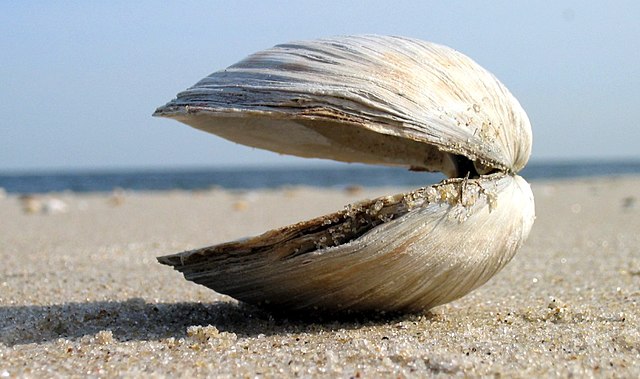The hard clam, also known as the round clam, hard-shell clam, or the quahog, is an edible marine bivalve mollusk that is native to the eastern shores of North America and Central America from Prince Edward Island to the Yucatán Peninsula. It is one of many unrelated edible bivalves that in the United States are frequently referred to simply as clams. Older literature sources may use the systematic name Venus mercenaria; this species is in the family Veneridae, the venus clams.
Hard clam
Left valve interior of Mercenaria mercenaria.
An old quahog shell that has been bored (producing Entobia) and encrusted after the death of the clam
Steamed clams
Clam is a common name for several kinds of bivalve molluscs. The word is often applied only to those that are edible and live as infauna, spending most of their lives halfway buried in the sand of the seafloor or riverbeds. Clams have two shells of equal size connected by two adductor muscles and have a powerful burrowing foot. They live in both freshwater and marine environments; in salt water they prefer to burrow down into the mud and the turbidity of the water required varies with species and location; the greatest diversity of these is in North America.
A clam shell (species Spisula solidissima) at Sandy Hook, New Jersey
Littleneck clams, small hard clams, species Mercenaria mercenaria
A clam dish
Clams simmering in a white wine sauce






